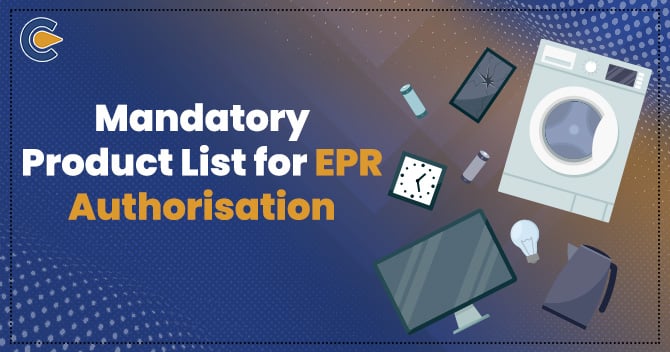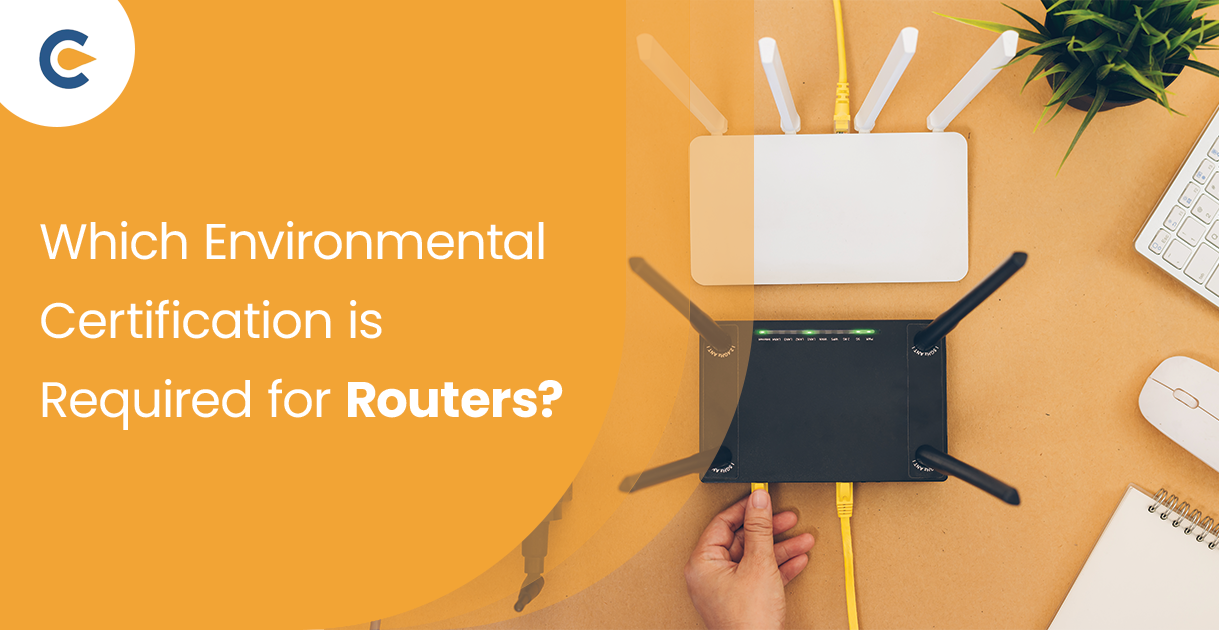EU defines E-Waste as electrical or electronic equipment that is Waste, including all components, subassemblies and consumables that are part of the product at the time of discarding. According to the latest reports concerning E-Waste in India, the E-Waste generation in India has increasedby 43% between FY (Financial Year) 2018 and 2020. Further, in the 2020 Report of the Central Pollution Control Board on the E-Waste generation in India, around 1,014,961 tonnes of e-waste were produced in FY 2019-2020 – up 32% from FY 2018-2019. Further, the report establish that only 3.6% and 10% were collected in the country in 2018 and 2019, correspondingly.
Therefore in order to curb this growing amount of E-Waste,it is essential for all the critical stakeholders, including producers, to fulfil their liability under EPR Policies to manage the E-Waste and recycle it effectively.
E-Waste (Management) Rules 2011 was first introduced to provide the first set of regulations which mainly address E-Waste and producers’ responsibility to set up collection centres, whether individually or by collaboration, in order to direct the waste for safe disposal. Later through amendment, the responsibility of the producers’ was elaborated, including providing the mandatory list of products for EPR Authorisation.
Conditions and regulations relating to EPR Authorisation and list of products for EPR
The general terms mandated by the Central Pollution Control Board relating to EPR Authorisation and the list of products for EPR: –
- The EPR Authorisation shall be by the provisions of the Environment (Protection) Act, 1986 and the E-Waste (Management) Rules, 2016
- The authorised recyclers have to produce an authorisation or renewal certificate for inspection by the officer authorised by the Central Pollution Control Board
- Any alteration in the Extended Producers’ Responsibility plan should be informed within 15 days to the Central Pollution Control Board, which needs to revert within sixty days.
- It is the responsibility of the authorised Producers’/Recyclers and Refurbished to take prior consent of the Central Pollution Control Board before closing down any facility which is part of the Extended Producers’ Responsibility plan,including any collection centre/points, dismantling facility, etc.
- For renewal of EPR Authorisation, the application should be made in accordance with rule 13(1) sub-rule (iv) of E-Waste (Management) Rules, 2016
- The CPCB (Central Pollution Control Board) has the right to cancel/amend/revoke the EPR Authorisation at any given time according to the policy of the Central Pollution Control Board or from the Ministry of the Environment[1], Forest, and Climate Change.
- In case of any change in the Extended Producers’ Responsibility plan or changes relating to PRO, the applicant is required to submit a revised application to the authority
- Apart from this, the applicant has to make sure that E-Waste is accumulated at collection centres and through a buyback and exchange scheme, which is further channelized to the authorised dismantler and recycler.
- The applicant also has to submit every quarter the quantity of the list of products for EPR Authorisation with EEE code, for example, ITEM1 (Minicomputer), that is collected and recycled by the applicant during that quarter.
- The applicant also has to record all the technical documentation regarding RoHS (Restriction of Hazardous Substances) for authorisation by State Pollution Control Board/Pollution Control Committee
- The applicant also has to provide the information on the booklet and pamphlets of its products relating to the Restriction of Hazardous Substances
- The applicant and RoHS information also have to submit Enclosure A of the self-declaration whenever a new product model is launched.
- If there is any violation on behalf of the applicant or any required conditions are not fulfilled, then the EPR Authorisation will be suspended or cancelled.
Mandated List of Products for EPR Authorisation
According to the guidelines provided by the Central Pollution Control Board, the dealer or the producers have to apply mandatorily if they produce products under mandated List of Products for EPR Authorisation.
| S.No. | Categories of Electrical and Electronic equipment | EEE Code |
| Information Technology and Telecommunication Equipment | ||
| 1 | Personal Computing: Personal Computers (CPU with input and output devices) | ITEW2 |
| 2 | Centralised data processing: Mainframe and Minicomputer | ITEW1 |
| 3 | Personal Computing: Laptop Computers (CPU with input and output devices) | ITEW3 |
| 4 | Personal Computing: Notebook Computers | ITEW4 |
| 5 | Personal Computing: Notepad Computers | ITEW5 |
| 6 | Printers including cartridges | ITEW6 |
| 7 | Copying equipment | ITEW7 |
| 8 | Electrical and electronic typewriters | ITEW8 |
| 9 | User terminals and systems | ITEM9 |
| 10 | Facsimile | ITEW10 |
| 11 | Telex | ITEW11 |
| 12 | Pay telephones | ITEW13 |
| 13 | Cordless telephones | ITEW14 |
| 14 | Cellular telephones | ITEW15 |
| 15 | Answering System | ITEW16 |
| 16 | Telephones | ITEW12 |
| Consumer Electrical and Electronic Products | ||
| 1 | Television sets (Smart TV including sets based on LCD and LED technology) | CEEW1 |
| 2 | Refrigerator | CEEW2 |
| 3 | Washing Machine | CEEW3 |
| 4 | Air-conditioners, excluding centralised air conditioning plants | CEEW4 |
| 5 | Fluorescent and other Mercury-containing lamps | CEEW5 |
Process for EPR Authorisation
Authorisation for Extended Producers’ Responsibility is mandatory for every manufacturer and Producer under E-Waste (Management) rule, 2016.
Every Producer/Recycler or dismantler under the mandated list of products for EPR Authorisation of the E-Waste (Management) rulemust apply within 90 days by finishing Form 1 and submitting it to the Central Pollution Control Board. The process involves:-
- The form mandated by CPCB is to be filled with all the appropriate facts, comprising the applicant’s name, particulars of the electronic devices, etc.
- The report/plan should also compriseinfo on predicted E-Waste generation and collection targets for the coming year, as well as aplan for an awareness campaign on Extended Producer Responsibility.
- Further, the application form is referred to along with the EPR Plan to CPCB, which is revised by authorised personnel of CPCB.
- If the form is submitted according to the guidelines provided, the Central Pollution Control Board will issue an EPR Authorisation certificate.
The producer, if has to submit a renewal application for EPR Authorisation,has to submit the form before 120 days (one hundred and twenty days) of its expiration to the Central Pollution Control Board.
Documents to be submitted for list of products for EPR Authorisation
The list of documents submitted along with the EPR Application:-
- The Copy of the authorisation or certificates from the applicable ministry or authorities for doing business is given below:
- GST Certificate details
- PAN (Permanent Account Number) details
- Copy Company Incorporation certificate
- Copy IEC (Import/Export Certificate) in case of importers
- The Self-declaration for compliance with RoHS (Restriction of Hazardous Waste)in accordance with the format
- The Copy of authorisation/certificate granted by the State Pollution Control Board/Pollution Control Board earlier under E-Waste (Management & Handling) Rules, 2011 in the case of those producers who are working in the country prior to 01-10-2016.
- the details and information of projected awareness and allied initiatives
- The Copies of the agreement document with the key stakeholders(dealers, collection centres, dismantlers, recyclers as well as treatment, storage, disposal facilities (TSDFs),etc.).
- Documents related to the EPR action plan as envisaged in sections
- The Estimated budget set aside for fulfilling Extended Producer Responsibility (EPR)
Post Compliance Requirements
After recyclers are granted E-Waste Recycling authorisation from State Pollution Control Board/Pollution Control Committee, they have to comply with certain conditions, including: –
- Recyclers are required to provide a Copy of the destruction certificate granted to recyclers
- Fill out Form-6 regarding E-Waste Manifest
- Fill out Form-2 regarding records of E-Waste handled, dismantled, and recycled.
- Authorisation for disposal of Hazardous and other wastes under Hazardous and Other Wastes (Management and Transboundary Movement) Rules, 2016
- Recyclers also have to submit annual returns in form 3 to the respective State Pollution Control Board/Pollution Control Committee
Conclusion
The Rules and the authorities provide a mandatory list of Products for EPR authorisation to monitor and regulate the activities of those producers regarding their Extended Producers’ Responsibility.
Read our Article:Types of E-Waste under EPR











